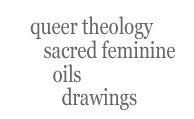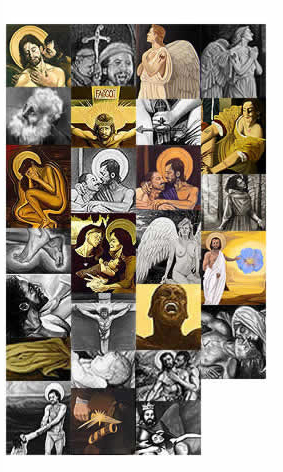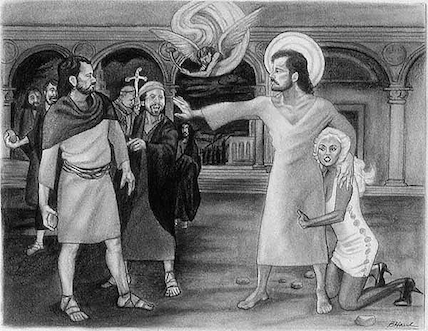



stoning of the drag queen

Ironically, the Bible has been used to bolster popular ideologies that have galvanized state-sanctioned, majority-ruled oppression. Explore American history and you will find a biblical imprint permeating the fabric of our society and our politics. When slavery was challenged, the Genesis story of Ham and several New Testament passages were quoted to legitimatize the “obey your master” slavocracy of the ante-bellum South. Not until the 1960s civil rights movement were African-Americans guaranteed equal protection under the law. Interracial marriages have been a social taboo. White supremacist groups to this day use the Bible to justify their hatred of nonwhite people.
As for women, the Bible has offered little support for the autonomous equality of the female sex. With its primogenitor Eve, having been created from Adam’s rib as his helpmate, the biblical framework entitled men to authority over women, a dominance that 20th century democracies have legally stricken down. Sadly, we witness the throes of male entitlement in the epidemic battering of women by their husbands and boyfriends.
Turning to gay rights, the Bible once again enters the political fray. Who can refute that the vilifying term “Sodomite” springs from the Old Testament? State sodomy laws are mostly aimed at homosexuals. Gay-bashing, a violent reality, also occurs philosophically in bible-thumping debates over gay marriage, anti-discrimination and other topical issues. In most circles of American life, the stones hurled at gays land as scornful rhetoric, indictments and legislation. Despite the injustice of majority rule, I keep faith in the allegory of the intervening Christ.
* * * * *
The above commentary was written in 1993, before the U.S. Supreme Court struck down state sodomy laws, before marriage between lesbian and gay partners became legal in numerous states, and before the U.S. elected its first African-American president, Pres. Barack Obama. Unfortunately, we still have a long, long way to go to fulfill the promise of equal justice for all.
In the early 1990s, when I was conceptualizing this artwork, I was ignorant of the terms, transgender, trans woman, or trans man. Drag queens may still perform today, but the title of the artwork doesn't address the greater community of transgender men and women. The Stoning of the Trans Woman would have been a more suitable title, especially given the violence perpetrated against transgender women and men, and those of color. Attending the Transgender Day of Remembrance or TDOR has been a heart-breaking experience. Sadly, the list of those killed for being transgender seems to grow each year.